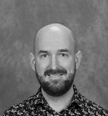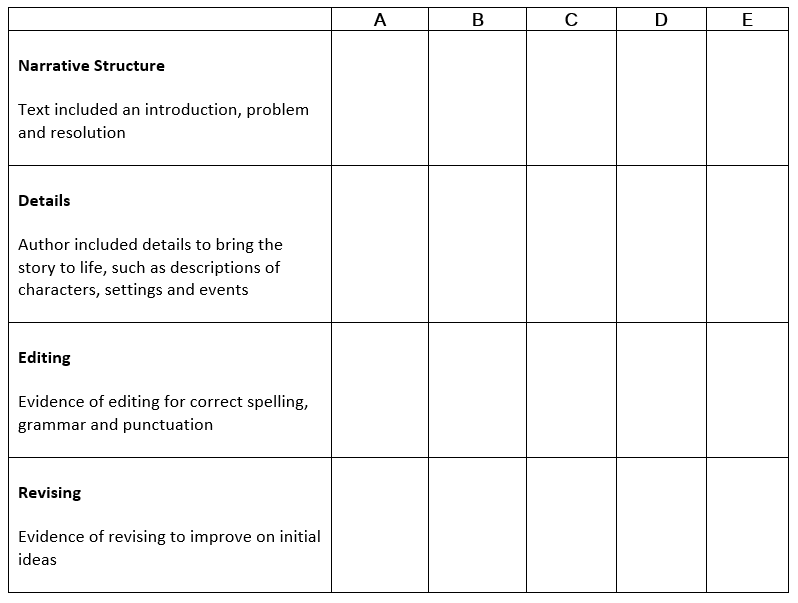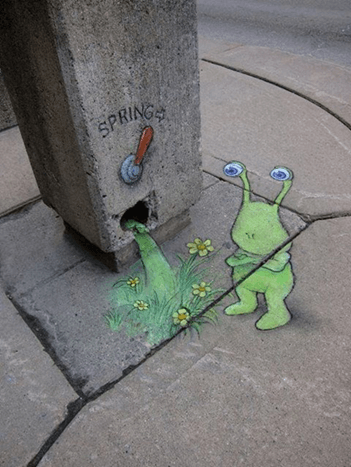
By Chris Allen
EDITION #1 – How do I get started?
Published – 20th February 2019

The purpose of assessment
At the start of the year we need to identify where the students are at.
At the start of each school year we need to get to know a new class. We need to identify where the students are at. Assessment helps with this process. There are three types of assessment to do this:
- Formative assessment is used by teachers to identify the needs of their students and provide purpose and direction for their teaching. This type of assessment is utilised on a daily basis to determine how students are progressing, which skills need to be revisited, and which students need further challenges.
- Summative assessment is typically a very formal type of assessment. It is performed at the end of a sequence of learning or at designated periods of the year to measure student performance against outcomes and standards, such as state and national curriculums.
- Once you are settled with your students you will also use assessment as learning, which focusses on students reflecting on their learning and assessing themselves. Students reflect on how they are performing in each area of their learning, setting themselves goals to improve, and devising plans to achieve those goals.
When we think about these, we need to focus on what assessment tells us about the progress that students (individually or in groups) have achieved in their learning at the time of assessment.
What I do at the start of a year?
I set myself the goal to complete assessments for learning within the first four weeks
At the start of every school year I set about using my toolkit of assessment strategies to determine where each of my students are at in relation to reading, writing, spelling and numeracy. I set myself the goal to complete assessments for learning within the first four weeks. Investing the time at the start of the year to do this saves time later, as you have purpose and direction from the very beginning as to what your students need. I have set out below the process that I use:
- I use assessment for learning in the form of running records with every child to determine their reading age, reading level, strengths, weaknesses and general reading habits.
- This is carried out in one to one reading conferences using a formal assessment tool. In my school we are currently using Fountas and Pinnell’s Benchmark Assessment System (Fountas and Pinnell, 2018), but ask what system is being used in the school where you are working.
- After analysing the data, I conduct a follow-up conference with each child and collaborate with them as they assess themselves and identify a personal reading goal.
- A set of strategies is developed for the student to use to work towards achieving their goal, and we then conference on a regular basis to track their growth, discuss their progress and set new goals as needed.
To determine the spelling age and areas for development for each student in this area of literacy, I use a formal assessment tool such as the Single Word Spelling Test (GL Assessment, 2017). This allows me to form strategy groups for my spelling program based on individual need. Once again, ask your mentor what system is used in your school.
Pre- and post- assessments are great learning tools for gauging current student performance. At the beginning of each unit I conduct a pre-assessment to identify what students already know and what they need to learn. For example, for a writing unit, the pre-assessment involves students completing a piece of writing in the text type the unit will be covering, and this is marked against a rubric made up of the skills to be taught in the unit. In numeracy, the pre-assessment is made up of a series of questions focussing on the skills and strategies that will feature in the unit. A post-assessment is then conducted at the end of the unit to measure student growth and identify the future focus for each student.
What do others do?
Secondary teachers listen to and observe each student
Secondary teachers that I have worked with listen to and observe each student reading to them, asking questions about the text to draw out understanding from the student and recording these observations either using a video camera or as anecdotal notes. At the end of each conference, teachers are left with a picture as to what strategies students use to decode unknown words, how much students comprehend, and what strategies students need to focus on as personal learning goals.
What does the research say?
Research supports using a combination of assessment to get the best learning outcomes
Cambridge International Education Teaching and Learning Team (2018), write that assessment for learning helps students to see that their current level of performance is not a final, set-in-stone measure of what they are capable of. The feedback that teachers provide to their students through assessment for learning tools, such as the running record assessments, helps students see what they can achieve, what areas they need to improve on and how they can use strategies to work towards achieving those goals.
Setting and achieving goals can greatly increase student motivation and engagement. Black and Wiliam (2001) state that teachers utilising assessment for learning are able to identify achievable targets for all students. These targets can then be communicated to individuals in a one to one conference. Students are active partners in their learning as they are given a voice and involved in the decision making about their personal learning goals.
A major role for teachers is to give students feedback on their learning and act on feedback received. Hattie (2012) states that for feedback to be effective teachers need to understand where students are currently sitting and where they should be. Utilising assessment for learning allows teachers to gain these insights into their students.
What does the Department say?
All three forms of assessment should be utilised by teachers
The Department of Education and Training advises that to improve student learning and achieve deep understanding, three forms of assessment should be utilised by teachers.
Specific mention is made of using information gathered through assessment for learning to provide direction for future teaching, as well as directly involving students in assessment as learning strategies to help set, monitor and achieve personal learning goals.
The Department has also developed professional practice notes to assist you to deliver evidence-based formative assessment in your classroom, see: Professional practice note six: formative assessment (pdf – 158.67kb)
I use the resource titled ‘Assessment in Principle’ (Department of Education, 2018). For example, as I conduct formal assessment tasks at the beginning of Numeracy and Writing units to gauge student skill levels and identify the appropriate pathway for each individual, I am reflecting the Department’s principle of using assessment to inform my planning and to ensure that the learning experiences I deliver are progressing through the appropriate curriculum standards for each student (Department of Education, 2018).
Practical resources
- Example of a basic rubric for writing
To prepare this tool, I identify what I want students to learn from the unit and write these down as criteria in the rubric that will be used to mark the assessment piece. The A-E fields of the rubric are populated with descriptions of what I would expect to see from students performing at each of those levels. It is important that these fields are written in student-friendly language so that when the feedback is shared with the students, they are able to understand and act upon it.

For more information on rubrics, you may want to refer to the VCAA Guide to Formative Assessment Rubrics (see https://www.vcaa.vic.edu.au/Documents/viccurric/formative- assessment/GuideFormativeAssessmentRubrics_2019.pdf ) which provides advice to teachers about how to develop formative assessment rubrics, to decide what students know and can do, and to identify what students are ready to learn next.
- A writing prompt
When working on narrative writing, I use either a picture (see Figure 1 for an example) or a short video that is very thought provoking and requires using the imagination to determine what is happening. I have found David Zinn’s street art to be particularly powerful in the upper primary grades. I also use short animation videos available from DreamWorks and Pixar on YouTube (see https://www.youtube.com/watch?v=D0a0aNqTehM for an example).

Figure 1: http://zinnart.com/
The prompt is viewed together as a whole class, and I then facilitate a whole-class brainstorm where students share what they think was happening in the picture or video, and what they could write about in a narrative. After 5-10 minutes of whole-class brainstorming, students are given 60 minutes to plan, draft, revise and edit a narrative using the prompt as a basis.
I aim to get all pieces marked within 48 hours, and then discuss and share feedback with each student in a 1:1 conference within a week of the test being completed. This enables the student to engage in assessment as learning and identify a personal learning goal for the unit.
What assessment challenges have I experienced?
This strategy saves me an enormous amount of time.
In my first couple of years I struggled with the time that I was spending marking work, particularly Mathematics pre- and post-assessments. I began administering these assessments on paper, which were very time consuming to mark.
Overcoming this challenge with a flipped classroom
To overcome this challenge, I started using an online learning management system to start transforming my classroom into a Flipped classroom. I am now able to create a wide range of assessment tools myself and administer them digitally across all subjects. Now all assessments are marked automatically. This saves me an enormous amount of time and allows me to deliver feedback to the students immediately, so they can begin their process of self-reflecting and goal setting right at the beginning of the unit.
I am currently using Canvas (see https://canvas.instructure.com/login/canvas) as my choice of online learning management system, but in the past have had great success using Edmodo as well (see https://www.edmodo.com). If you intend to use a tool like Canvas or Edmodo, please check your school’s policy on privacy, data security and use of online tools.
Key takeaways for graduate teachers
Develop a personal toolkit of assessment strategies
It is a time-consuming process gathering the data at the start of the school year, whilst also trying to get to know each child and develop a personal relationship with them. To maximise the teaching and learning that happens in your classroom, and to engage all students in meaningful and purposeful learning, I strongly encourage you to develop a personal toolkit of assessment strategies such as mine and start using it.
Be transparent in your formative assessments
The most important piece of advice that I have: ‘Do not keep the results of the assessments secret. Mark the work, then conference 1:1 with each child as soon as you possibly can’. Not only are you making the benchmark for success totally transparent for the students, but you are also getting students actively involved in their education as they discuss their progress and make plans for future learning with you by their side to guide them.
Use your colleagues who will have faced similar challenges
It is expected at this early stage in your careers that you will come across challenges and setbacks; you may be unsure how to best analyse a set of data or may just want to run your ideas by someone to get another opinion. Chances are someone in your school has already faced the same challenge you have come across and are more than willing to share their solution with you. I strongly encourage you to use your mentor or a trusted colleague within your school to help guide you through the assessment processes.
References
Black, P. and Wiliam, D. 2001, Inside the Black Box: Raising Standards Through Classroom Assessment, School of Education, King’s College, London.
Cambridge International Education Teaching and Learning Team 2018, ‘Getting Started with Assessment For Learning’, viewed 23 October 2018
https://cambridge-community.org.uk/professional-development/gswafl/index.html
Department of Education and Training 2018, ‘Assessment’, viewed 29 October 2018
https://www.education.vic.gov.au/school/teachers/teachingresources/practice/Pages/assessment.aspx
Department of Education and Training 2018, ‘Assessment in Principle’, viewed 29 October 2018
https://www.education.vic.gov.au/school/teachers/teachingresources/practice/Pages/insight-principle.aspx
Fountas, I. and Pinnell, G. 2018, ‘Benchmark assessment’, viewed 17 October 2018,
http://www.fountasandpinnell.com/bas/
GL Assessment 2017, ‘GL Assessment’, viewed 17 October 2018,
https://www.gl-assessment.co.uk/sellingline/swst?productNodeId=2234
Hattie, J. 2012, Visible Learning for Teachers: Maximising Impact on Learning, Routledge, Abingdon.